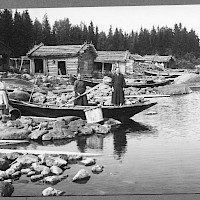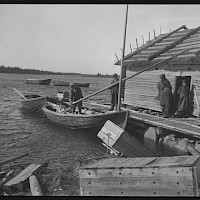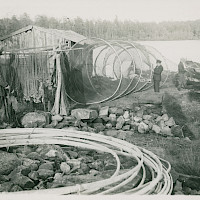
Fishing
Fishing provided an important source of income for the inhabitants of the archipelago, all year round. Baltic herring was caught in the summer using gill nets, later fyke nets. In the winter, seines were hauled under the ice.
Visit the fisherman's cabinFishing was labour-intensive. The fishermen therefore joined together in fishing companies, sharing a fishing boat and dividing up the work. The nets had to be set and then emptied and taken up to dry, and any damage had to be repaired. The fish had to be cleaned and salted. The boat, too, required regular maintenance.
Baltic herring was by far the main catch. The inhabitants of the archipelago had herring on their plates practically every day. Herring was also sold in town, giving the fishermen and their families a much-welcomed additional income. Herring was so important that people spoke of “herring” as opposed to “fish”, the latter referring to species such as bream, roach, whitefish, burbot and perch. All those species were fished as well, but they were not nearly as important as herring.
The fishing expeditions often took the fishermen out into the outer archipelago, a long way from home. An expedition might take several weeks, and the men – sometimes taking their families with them – needed a place to stay. Fishing villages with humble fishermen's cabins soon emerged on the skerries in the outer archipelago. The fishermen and their families stayed in the villages for perhaps a fortnight, after which they returned home to get more provisions and to sell off the fish.

















